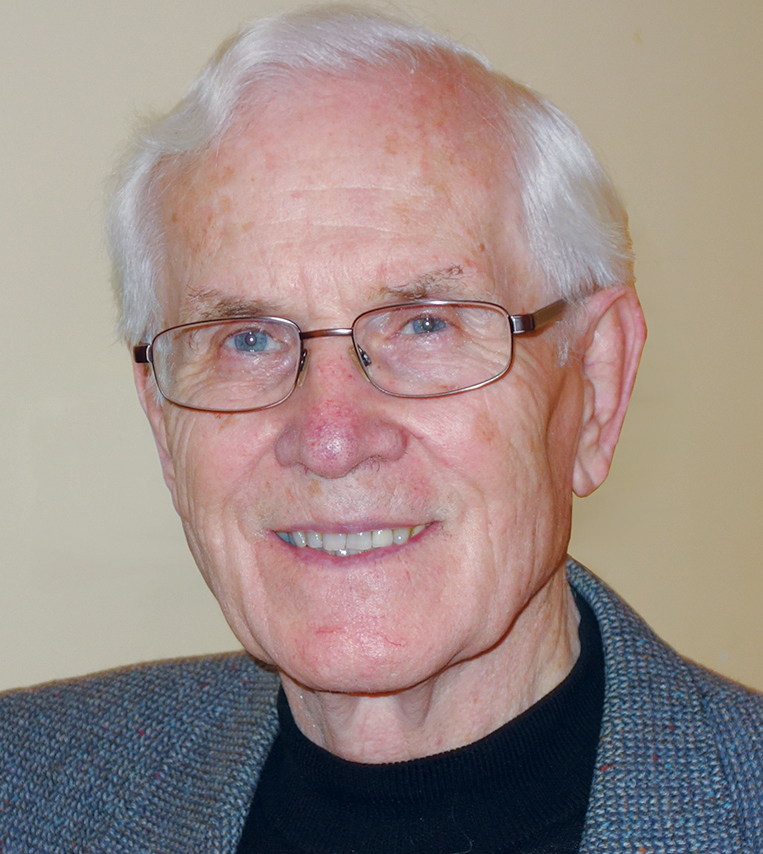Dr Daniel Froese, 1926–2022

Dr Daniel Froese, 96, passed away gently, quietly on 25 December 2022, in the presence of Margaret, his wife of 70 years, along with family and attending staff at the Waterford seniors’ residence, Tsawwassen.
Daniel came from a German Mennonite family that emigrated from Russia. He was born near Swift Current, Saskatchewan, where the family (including 10 children) initially settled; a few years later they moved to Abbotsford, where Daniel finished school.
An excellent student, Daniel showed an interest in learning and teaching, so he attended the Mennonite Educational Institute of Abbotsford. It was not a degree-granting institution or college, but here he was invited to teach science to his fellow students, without any teacher’s certificate. He was interested in studying art but, following this teaching experience, favored science. He completed a BSc at the University of British Columbia and was admitted to the then new UBC School of Medicine in 1953 (UBC’s third graduating class). He was recognized as a focused, bright student, humble, committed, considerate, friendly, and respectful of others. Upon graduation, he fulfilled his rotating internship at Vancouver General Hospital and joined a friend and fellow medical student as partners in family practice and geriatrics until his retirement at age 88 (57 years later).
Daniel dearly loved his wife, Margaret, and their family of four boys and treasured his wide circle of friends. His interests included sporting activities—ball games, skiing, fishing, hockey, and cross-country bicycling—as well as picnics and camping. He made time for his artistic talents of sketching, painting, photography, woodworking, music, and singing. His home, thanks to the dynamic Margaret, was usually crowded with people at Halloween, Christmas, Victoria Day, and Canada Day, and always welcoming of their children’s friends to join the clamorous parties. Daniel, Margaret, and family took a year away, traveling across Canada and the US in a motorhome for the sake of everyone’s broader education; the children’s formal schooling continued by correspondence.
As a person, Daniel was steady, gentle, kind, generous, humble, faithful, attentive, empathetic, and considerate. He was also detailed, patient, caring, understanding, knowledgeable, and thorough, and he had a fine sense of humor. The sum of these characteristics, though, added up to sometimes being unaware of the clock or the passage of time.
As a family doctor, Daniel was adored by both adults and children. His reassuring attentiveness and kindliness, and his maturity in handling ill, worried people, are now often missing from the busy profession of medicine. The fact that he took time to deal with people meant that others would be waiting, but just the same, he was a favorite.
Daniel was a natural educator. Teaching, personal contact, communicating, and educating are a necessary part of a good physician’s life and work. Daniel was awarded and accelerated in his career to associate clinical professor in the UBC Department of Family Practice. He mentored many students and family medicine residents and used his skills and experience to explain, demonstrate, and satisfy his patients’ questions and concerns. He used these same skills in dealing with family, friends, and foes—if he had any.
To illustrate how thorough he could be, included is a line drawing of an injection procedure [Figure 1]. Over the years he built a catalogue of such drawings that he used to teach patients and students, accompanied by a session on anatomy, indications, and expected results. His art went further afield when he submitted a drawing [Figure 2], that he thought would be a perfect symbol engraved on the Canadian loonie to symbolize the Canadian West.
Daniel Froese—BSc, MD, FRCFP, associate professor—was one terrific person, family man, teacher, exemplary physician, and model family doctor/geriatrician. He worked hard, played hard, and lived life to the fullest. To say he will be missed is almost trite. We need more like him in our health care system.
—Nis Schmidt, MD
Vancouver
hidden
 |
| This work is licensed under a Creative Commons Attribution-NonCommercial-NoDerivatives 4.0 International License. |
